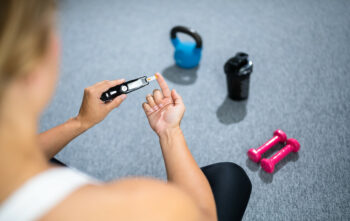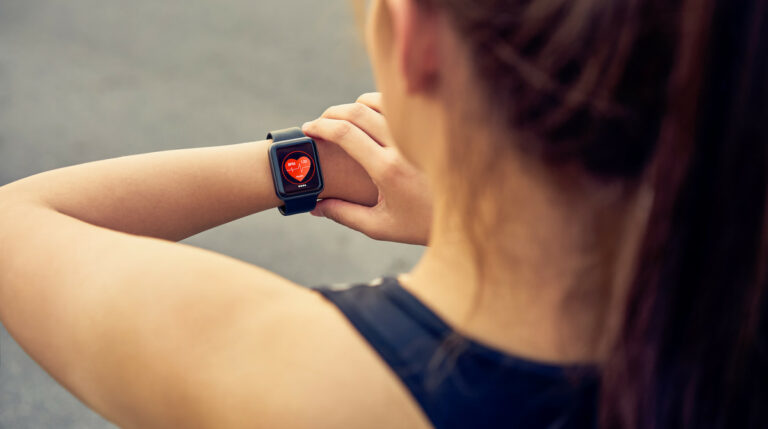
Exercising Safely with Type 1 Diabetes
Managing Type 1 diabetes while staying active can be challenging due to the complexities of blood sugar control. However, regular exercise is crucial for maintaining overall health and well-being. For people with Type 1 diabetes, keeping blood glucose levels in a safe range before, during, and after exercise is essential to avoid hypoglycemia and other complications. This blog will guide you through the key steps for safely managing your blood sugar while exercising, helping you stay fit without compromising your health.
What is Diabetes?
Diabetes is a metabolic condition characterized by high sugar levels within the blood. This encompasses many different diabetic conditions such as Type 1 diabetes, Type 2 diabetes, and gestational diabetes, just to name a few. (1)
The Difference Between Type 1 and Type 2 Diabetes
Type 1 diabetes is defined by high blood sugar levels resulting from the pancreas producing little to no insulin to help the body reduce its sugar levels. This autoimmune condition is chronic, lifelong, and is often diagnosed in childhood. In contrast, those with Type 2 diabetes do not have an autoimmune condition; their high blood sugar levels typically arise from the body becoming insulin-resistant, causing sugar to accumulate in the blood.
Type 1 diabetics not currently receiving insulin injections or administering insulin through a pump often feel tired and fatigued, as their body cannot absorb and utilize the energy within it. (1)
Why Do People Struggle to Exercise with Type 1 Diabetes?
Exercising with Type 1 diabetes can be challenging while trying to manage both blood sugar and insulin levels. It’s easy to fall into hypoglycemia (low blood sugar) during exercise, especially if the individual has recently had an insulin injection or hasn’t adjusted their insulin intake on their insulin pump. (2)
Falling into a hypo is a serious health risk with many complications. Typical symptoms include sweating, fatigue, nausea, irritability, and anxiety. If not treated by consuming glucose within the next 15–30 minutes, more extreme symptoms can occur, such as feeling light-headed, fainting, or even falling into a coma and dying. Therefore, it’s imperative for those with Type 1 diabetes to have a relatively high blood sugar level before beginning exercise, as well as adjusting their insulin pump or avoiding insulin injections prior to exercise. (2)
What is a Hypo?
A hypo, in general terms, occurs when your blood glucose levels fall below 4.0 mmol/L. A hypo can lead to serious complications if not addressed. Some complications include dizziness, headaches, hunger, blurred vision, and a rapid heartbeat. More serious complications can include confusion, slurred speech, seizures, and unconsciousness. In extreme circumstances, a hypo may lead to a diabetic coma or even death. (2,3)
Exercising with Type 1 Diabetes
Those with Type 1 diabetes can engage in the same types, frequencies, and intensities of exercise as those without the condition; many prominent athletes have Type 1 diabetes. However, they must be mindful of their blood sugar and insulin levels before, during, and after exercise. (2,3)
Understanding Exercise Intensity and Blood Sugar Levels
It’s important to understand how different types and intensities of exercise affect the body and influence blood sugar levels:
- Low-Intensity Exercise: Activities like walking and light cycling lower blood sugar levels both during and after exercise.
- Moderate-Intensity Exercise: Activities such as recreational soccer or jogging maintain blood sugar levels during exercise and lower them afterward.
- High-Intensity Exercise: Activities like sprinting or competitive basketball may slightly increase blood sugar levels during exercise but decrease them afterward. (2-4)
What Do I Need to Do to Complete Safe Exercise?
Before Exercise
Prior to exercise, it’s recommended for Type 1 diabetics to have a blood glucose level between 7–10 mmol/L. (2,3)
This slightly elevated blood sugar level helps avoid a hypo during exercise, which is common if levels are below 7.0 mmol/L before starting. Regularly monitoring blood sugar levels during and after exercise is crucial, as levels can drop rapidly. Most individuals with Type 1 diabetes use a continuous glucose monitor that provides readings every six minutes. (2,3)
During Exercise
Due to potential drops in blood sugar, it’s important to have a source of glucose on hand while exercising. Examples include jelly beans, juice, muesli bars, and bananas. It’s beneficial to have both low and high GI carbohydrates: high GI carbs for immediate relief from a hypo and low GI carbs for sustained energy.
After Exercise
After exercising, glucose levels can continue to drop. It’s important to check your levels post-exercise, ensuring they are above 5.5 mmol/L. If below, rest and consume glucose until levels rise above 5.5 mmol/L. This ensures safety when leaving the exercise location, preventing adverse events like hypoglycemia while driving. (2,3)
| Stage | Recommended Blood Glucose Level | Action to Take |
|---|---|---|
| Before Exercise | 7–10 mmol/L | Ensure blood glucose level is in this range to avoid a hypo during exercise. If below 7.0 mmol/L, consume glucose before starting exercise. |
| During Exercise | Monitor regularly (every 6 minutes if using a continuous glucose monitor) | Keep a source of glucose on hand. Use high GI carbs for immediate relief from hypoglycemia and low GI carbs for sustained energy. |
| After Exercise | Above 5.5 mmol/L | If blood glucose levels drop below 5.5 mmol/L, rest and consume glucose until levels rise above 5.5 mmol/L to avoid hypoglycemia. |
Consulting Your GP
Given exercise’s significant impact on blood glucose levels, it’s important for those with Type 1 diabetes to consult their GP for personalized advice. Your GP can refer you to an accredited exercise physiologist (such as Fortitude Exercise Physiology) or diabetic educator to recommend the most appropriate form of exercise for your needs and goals.
Reach out to us here at Fortitude Exercise Physiology and see how we can help you with a chronic disease management plan.
References
- Egan AM, Dinneen SF. What is diabetes? Medicine. 2019 Jan 1;47(1):1-4.
- Diabetes Australia – Exercise
- Diabetes Australia – Hypo and Hyperglycaemia
- American Diabetes Association – Why Does Exercise Sometimes Raise Blood Sugar?



